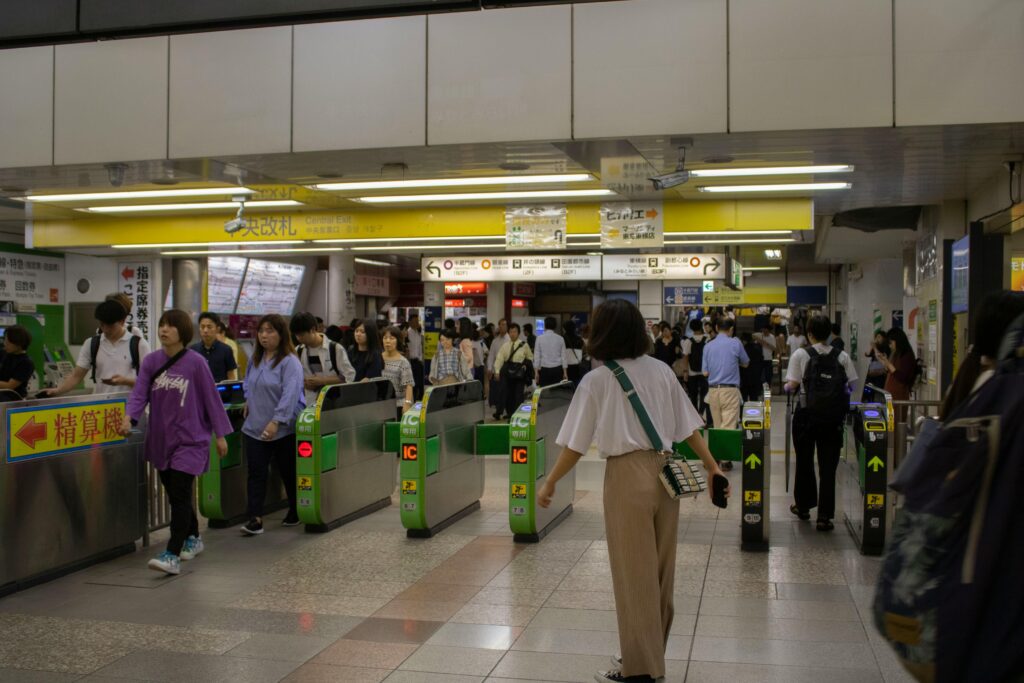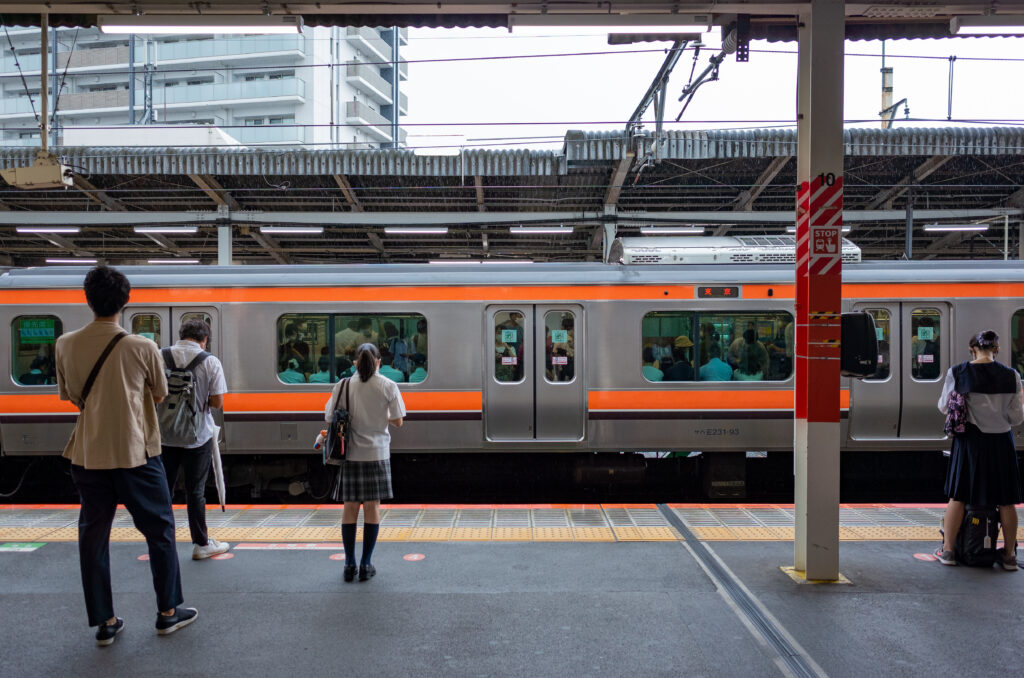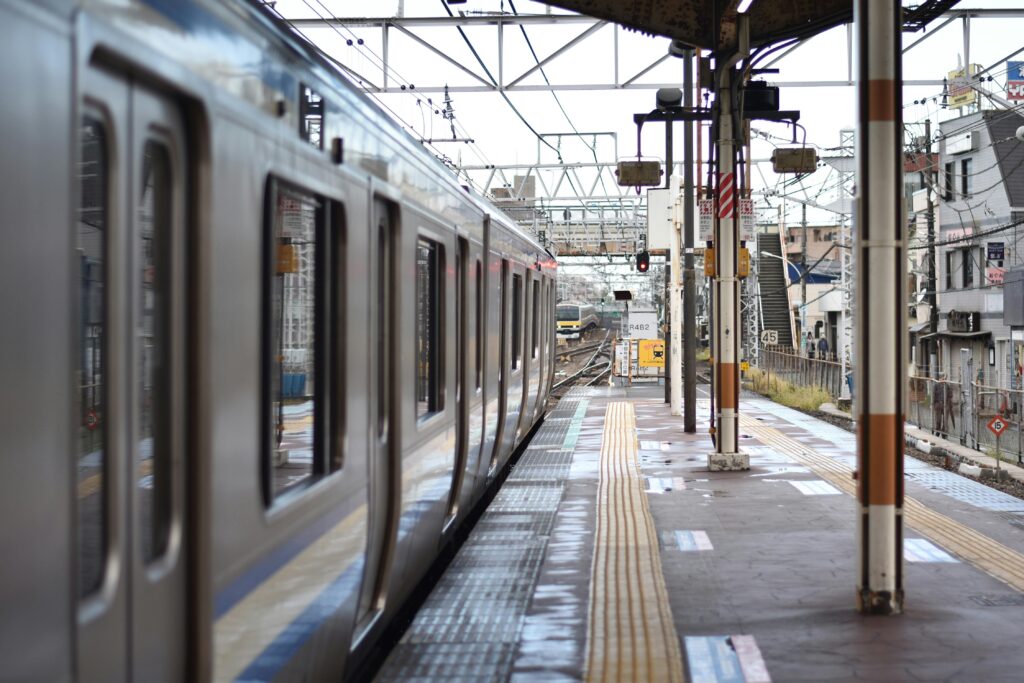Japan’s public transport is a marvel of efficiency, punctuality, and cleanliness—a well-oiled machine that seamlessly connects bustling metropolises and serene countryside. Yet, for first-time visitors, this intricate network can feel like navigating a futuristic labyrinth. While the trains may run like clockwork, understanding the nuances of routes, ticketing, and station amenities can be the difference between a smooth journey and a stressful one. Fear not, intrepid traveler! Beyond the simple tap of an IC card, a trio of unexpected hacks will transform you from a wide-eyed tourist into a savvy commuter, ready to conquer Japan’s rails with confidence.

Smarter Navigation
- The Hack: Combine Google Maps with a Japan-specific app.
- Why: Google Maps is a great starting point and offers a general overview of routes, station locations, and estimated travel times, and can often provide platform details, train times, and delay information. However, Japan’s train network is incredibly complex, with multiple operators (JR, private lines, subways) and highly precise schedules. A Japan-specific app can offer some advantages:
- Greater Accuracy and Reliability: Apps like Japan Travel by NAVITIME are designed specifically for the complexities of the Japanese rail network, often providing more accurate and up-to-the-minute information, especially for intricate transfers or when dealing with less common routes.
- Nuance: They may capture nuances that Google Maps might miss, such as very specific platform locations within large stations, the most efficient transfer routes considering train layouts, and detailed information on train types (local, rapid, express) and their respective stops.
- Offline Functionality: Some Japan-specific apps offer offline maps and route searching, which can be invaluable when you don’t have internet access.
- How:
- Use Google Maps to get a broad understanding of your journey:
- Find station locations.
- Get a general sense of travel time.
- Identify major transfer points.
- Visualize the overall route and the different lines involved.
- Enhance accuracy with a specialized app:
- For greater accuracy with train times and platform details, consider using a Japan-specific app like Japan Travel by NAVITIME. These apps are designed specifically for the complexities of the Japanese rail network.
- These apps provide:
- Precise timetables, often down to the minute, and detailed information on train types (local, rapid, express) and their respective stops.
- Detailed platform information, including platform numbers, train departure positions, and even information on which exits to use for the most convenient transfer.
- Real-time updates on train delays or service changes, with notifications and alternative route suggestions to minimize disruption.
- Route options tailored to the intricacies of the Japanese system, including the fastest or most efficient routes, with clear indications of transfer times and walking distances within stations.
- Fare calculations that take into account different operators, train types, and routes, ensuring you have the correct fare information.
- Some apps also offer:
- Offline maps and route searching, essential for areas with limited internet connectivity.
- Voice guidance for navigation, providing step-by-step instructions for complex transfers.
- Information on station facilities, like lockers, restrooms, ticket offices, and accessibility features (elevators, escalators).
- Search for nearby attractions, restaurants, and hotels, with information on how to access them from the station.

Cash is Still King for Public Transit
- The Hack: Don’t rely solely on IC cards.
- Why: IC cards like Suica and Pasmo are incredibly convenient for daily travel, allowing you to breeze through ticket gates and even make purchases at many stores. However, there are situations where cash and single tickets are still important:
- You might not have an IC card (especially if you’re a short-term visitor or haven’t gotten around to purchasing one, or if there are issues with card availability).
- You might be traveling to smaller towns or rural areas where IC card usage is less widespread. Also, in some areas only certain types of IC cards are accepted.
- You might prefer to have a tighter control over your spending by purchasing individual tickets for each journey, especially for long-distance travel.
- In case of IC card malfunctions or system errors, having cash as a backup can prevent you from being stranded.
- Important Note: While IC cards offer convenience, they might not always be the most cost-effective option, especially if you have a travel pass (like the Japan Rail Pass) or a specific itinerary with long-distance travel. In these cases, single tickets or a combination of cash and strategic IC card usage could be more economical.
- How:
- Using ticket machines:
- Familiarize yourself with the fare charts: These charts, usually bilingual, display the cost of travel to various destinations from your current station.
- Understand how to read the charts, including how fares might change based on the train type or route.
- Look for any special fare information or discounts that might be available.
- Purchase your ticket: Insert cash into the machine, select your destination and the number of tickets, and collect your ticket and any change.
- Be aware of the different types of tickets available (e.g., ordinary, reserved seat) and select the appropriate one.
- Check for any error messages or alerts on the ticket machine display.
- Important considerations:
- Carry small denominations of yen: Ticket machines accept various denominations of bills and coins, but having smaller bills and coins will speed up the process.
- Be prepared with a mix of coins and 1000-yen bills to avoid delays.
- Allow extra time: Ticket machines can get crowded, especially during rush hour, so give yourself plenty of time to purchase your ticket.
- Consider purchasing your ticket in advance if you’re traveling during peak hours.
- Fare adjustment: If you accidentally purchase a ticket for a shorter distance than your intended destination, you can use a fare adjustment machine (usually located near the ticket gates at your destination station) to pay the difference.
- Understand how to use the fare adjustment machine, which usually involves inserting your original ticket and the additional fare.
- If you’re unsure, don’t hesitate to ask station staff for assistance.

Utilize Train Station Perks
- The Hack: Embrace station amenities.
- Why: Japanese train stations are not just transit hubs; they are often mini-cities offering a wide range of services and amenities. Utilizing these can significantly enhance your travel experience, especially on longer journeys.
- How:
- Ekiben and beyond:
- While “ekiben” (specially prepared bento boxes) are a highlight, offering regional specialties and beautifully presented meals, Japanese train stations boast a much wider array of food options.
- Mini-markets (Kiosks and Konbini): Many stations, especially larger ones, house small supermarkets or convenience stores. These offer a range of ready-to-eat meals, snacks, drinks, and other travel essentials.
- Restaurants and Cafes: From quick立ち食いそば (tachigui soba, stand-and-eat soba) shops to sit-down restaurants serving regional cuisine, you’ll find diverse options to satisfy your hunger.
- Bakeries and Dessert Shops: Indulge in freshly baked goods, pastries, and traditional Japanese sweets.
- Purchasing and enjoying a meal at the station or on the train is a quintessential Japanese travel experience.
- Enhance the experience by pairing your food with a local beverage, such as Japanese tea, coffee, or sake.
- Other station features:
- Restrooms: Clean and well-maintained restrooms are available in most stations, often with features like heated seats and bidets.
- Many stations also provide amenities like baby changing stations and accessible restrooms.
- Stores and konbini: In addition to food, konbini are a great place to stock up on travel necessities, like phone chargers, toiletries, and over-the-counter medications.
- Lockers: Coin lockers are available for storing luggage, allowing you to explore the area around the station without being weighed down by your bags.
- Check the different sizes of lockers available to ensure they can accommodate your luggage.
- Be aware of any time limits or fees associated with using the lockers.
- Wi-Fi: Many stations offer free Wi-Fi, allowing you to stay connected and plan your next move.
- Check for any usage restrictions or registration requirements for the station Wi-Fi.
- Information centers: Station staff are generally very helpful and can provide information on train schedules, routes, and local attractions.
- Don’t hesitate to ask station staff for assistance with directions, ticket purchases, or any other travel-related inquiries.
- Other amenities:
- Some larger stations may also have:
- Souvenir shops
- ATMs and currency exchange
- Tourist information centers
- Free charging stations
- Smoking areas
- Art exhibitions or cultural displays

Ready to explore Japan’s amazing transit system? Armed with these unexpected hacks, you’re now equipped to navigate Japan’s intricate rail network with the confidence of a seasoned traveler. So, embrace the journey, dive into the delicious world of station food, and discover the hidden perks within Japan’s stations. The platform to adventure awaits—all aboard for an unforgettable ride!


Keep up with my latest adventures in Adventures Unpacked! A newsletter for the wanderlust-filled adventurer with news on my latest journeys, travel and photography tips, and more!